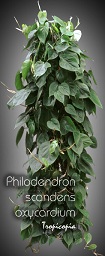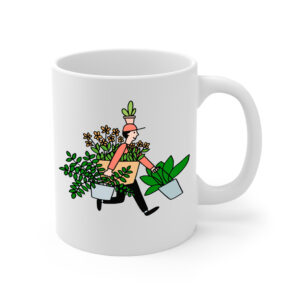Table of contents
Parlor ivy

Latin Name: Philodendron scandens oxycardium
Category: Philodendron
Family: Araceae
Origin: Central America
Climate: Tropical
Growing Zones: 11-10
Care Instructions
The Parlor ivy (Philodendron scandens oxycardium) is a tropical plant that originates from Central America. This philodendron plant belongs to the Araceae family and is well-suited for growing in USDA zones 11-10.
Complete Care Guide for Parlor Ivy (Philodendron scandens oxycardium)
Watering Requirements
Parlor Ivy, also known as Philodendron scandens oxycardium, thrives best with a consistent watering schedule. It is essential to allow the top inch of soil to dry out between waterings. Overwatering can lead to root rot, so it’s crucial to ensure that the pot has adequate drainage. During the growing season (spring and summer), water the plant more frequently, approximately once a week, while in the dormant season (fall and winter), reduce watering to every two weeks. Always check the moisture level by sticking your finger into the soil; if it feels dry, it’s time to water. Additionally, using room temperature water is recommended to avoid shocking the plant.
Light Conditions
Parlor Ivy prefers bright, indirect light but can also tolerate low light conditions, making it an excellent choice for indoor spaces. Direct sunlight can scorch the leaves, so it’s best to place it near a window with filtered light or in a well-lit room. If the plant is not receiving enough light, you may notice slower growth and leggy stems. Conversely, if the leaves start to yellow or develop brown tips, it may be receiving too much direct sunlight. For optimal growth, aim for a balance of light exposure, ideally around 6-8 hours of indirect sunlight daily.
Soil Preferences
Parlor Ivy thrives in a well-draining potting mix that retains some moisture without becoming soggy. A blend of peat moss, perlite, and pine bark works well, providing the necessary aeration and drainage. It’s important to repot the plant every couple of years to refresh the soil and provide more space for growth. Fertilization should be done during the growing season with a balanced, water-soluble fertilizer every 4-6 weeks. In the dormant season, reduce or eliminate fertilization, as the plant’s nutrient needs decrease.
Pests and Diseases
Common pests that may affect Parlor Ivy include spider mites, aphids, and mealybugs. Regularly inspect the undersides of leaves and stems for any signs of infestation. If you notice pests, treat the plant with insecticidal soap or neem oil, ensuring to cover all affected areas. Additionally, keep the humidity levels moderate, as low humidity can lead to spider mite infestations. Diseases such as root rot can occur if the plant is overwatered, so maintaining proper watering practices is crucial. Yellowing leaves can indicate overwatering or poor drainage, while brown, crispy leaf edges may suggest underwatering or low humidity.
Special Care Tips
To keep your Parlor Ivy healthy and thriving, consider the following special care tips: regularly wipe the leaves with a damp cloth to remove dust and improve photosynthesis. This also helps prevent pest infestations. If you want to encourage bushier growth, pinch back the tips of the stems to promote branching. Additionally, Parlor Ivy can be propagated easily through stem cuttings; simply place cuttings in water until roots develop, then transfer them to soil. Lastly, be mindful of the plant’s toxicity; while it is not lethal, ingestion can cause mild irritation, so keep it out of reach of pets and small children.








